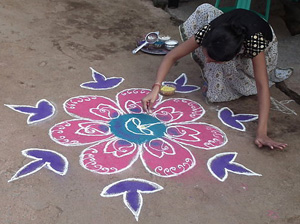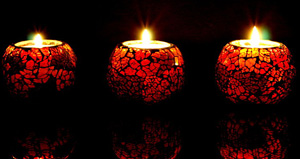Mehndi MadnessTM Blog
 Krysteen
KrysteenDiwali is also known as the “Festival of Lights”. It is an ancient hindu festival that takes place every autumn. This festival symbolizes the power of good over evil, light over darkness, knowledge over ignorance, and hope over despair. It is a very happy celebration that lasts five days. This year, Diwali falls on October 23rd and is an official holiday in India, Nepal, Sri Lanka, Myanmar, Mauritius, Guyana, Trinidad, Tobago, Suriname, Malaysia, Singapore, and Fiji.
Diwali's religious significance varies but it uniformly known as a celebration of light in both the literal and spiritual sense. The celebration centers around the new moon at the end of the Hindu lunar month of Ashvin and start of the month Kartika. Because of this, the date of diwali changes every year but is always around mid october and early november. The preparation for Diwali takes weeks, families clean their homes, go shopping for themselves and for their families. The festival begins two days before Diwali, and ends two days after.
 1st Day: Dhanteras
1st Day: Dhanteras
In preparation for the festival, houses and businesses are cleaned, renovated, and decorated. Women and children decorate entrances with colorful designs that use colored chalk-like powder and flowers. These designs are painted both outside and inside the entrance. Men and boys are in charge of setting up lighting and large arrangements. For some religions, this day is birthday or the goddess of health and healing, and the goddess of wealth and prosperity. Lamps are lit and kept on all night as a symbol to welcome the festivities. This day is also a major shopping day. Gold and silver jewelry, sweets, clothing, and seasonal dried fruits. Lakshmi Puja, a prayer to Goddess Lakshmi, is performed to bless their families and businesses with prosperity.
 2nd Day: Naraka Chaturdasi
2nd Day: Naraka Chaturdasi
This day is also called Choti Diwali. Rangoli or Kolam decorations are prepared outdoors and in the home. These decorations are made with colored flower petals. These can also be done on the first day. In some regions, a bathing ritual is done with fragrant oils and perfumes, followed by Minor Pujas, another prayer. Women decorate themselves with henna and families prepare sweets and meals for the following day.
